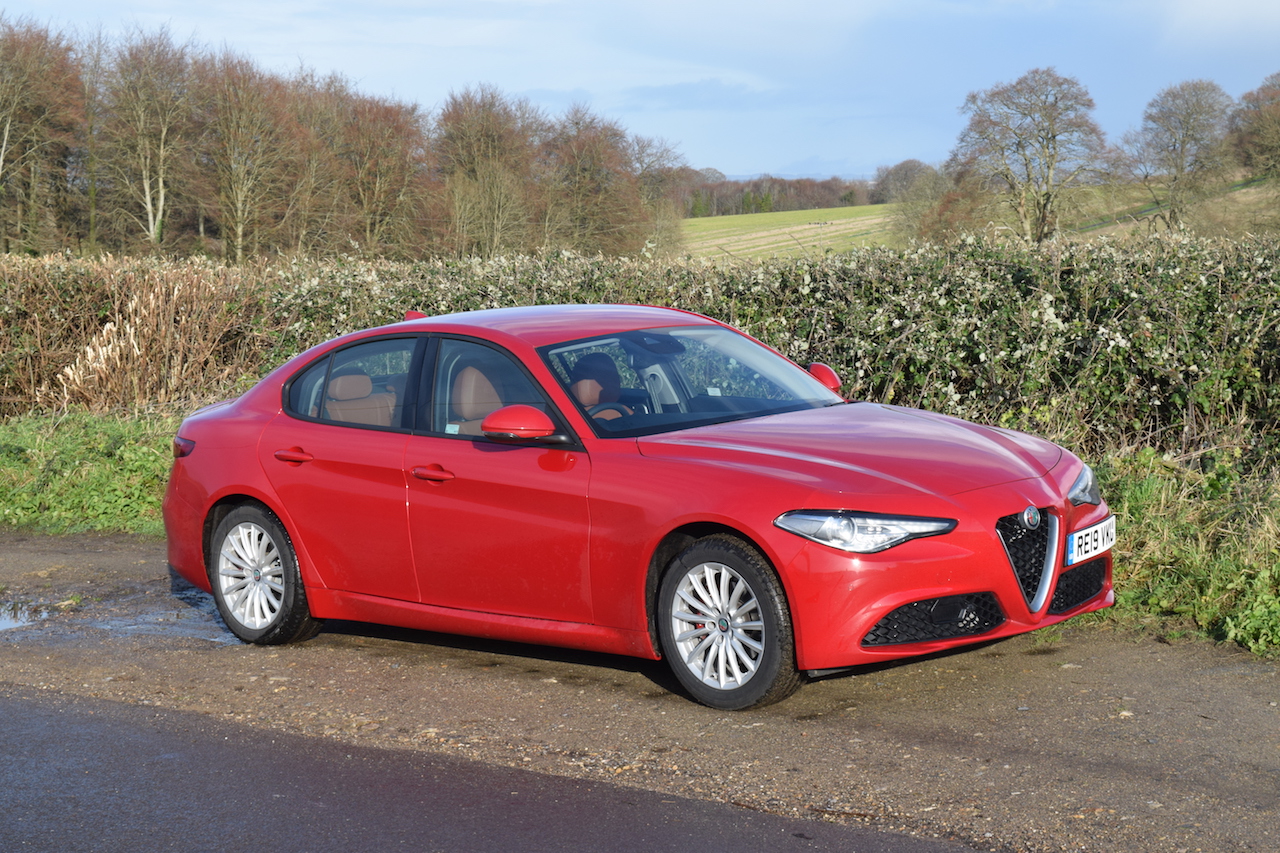 Distinctively sleek styling, excellent performance and character in keeping with generations of Alfa Romeo classics, today’s Giulia provides all this and more…
Distinctively sleek styling, excellent performance and character in keeping with generations of Alfa Romeo classics, today’s Giulia provides all this and more…
…Kim Henson test drives 2.0 litre petrol-powered Super version.
(All words and photographs by Kim).
Through the years Alfa Romeos have always been highly regarded for their high performance credentials and rewarding driving dynamics. The company’s models produced in recent years have continued this tradition, while gaining ground in terms of buyer interest as the very real rust problems of Alfas of the past have been banished by the firm. These days Alfa Romeo is a vital part of the Fiat Chrysler Automobiles (FCA) set-up.
The company’s line-up includes compact MiTos, mid-range Giulietta hatchbacks, 4C sports cars, Stelvio ‘crossovers’ and four door Giulia saloons. For this feature we are concentrating on the Giulia, specifically in 2.0 litre petrol form.
The Giulia model name dates back to 1962, and over the last few years years has been revived for the rear wheel drive sports saloon which is vying for sales against a variety of competitor models from (for example, and in alphabetical order) Audi, BMW, Jaguar, Lexus and Mercedes-Benz.
Arguably, the Giulia is more sporty and individualistic in its appearance than its rivals, and undeniably the car benefits from Alfa’s legendary prowess in building cars that score very highly in driver appeal ratings. Personally I find it a very good looking vehicle too, with its low-slung sleek bodywork and unmistakable grille set-up telling the world that this car can only be an Alfa…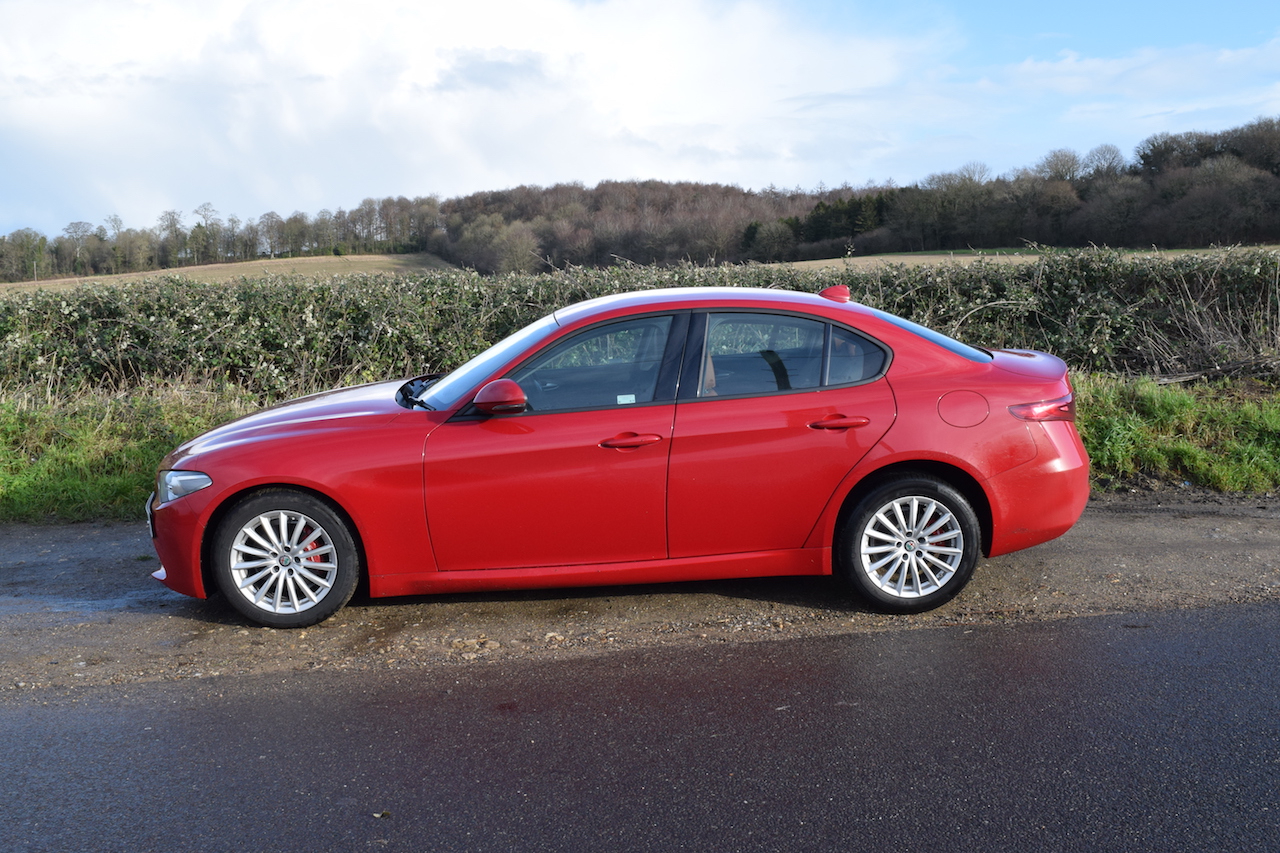
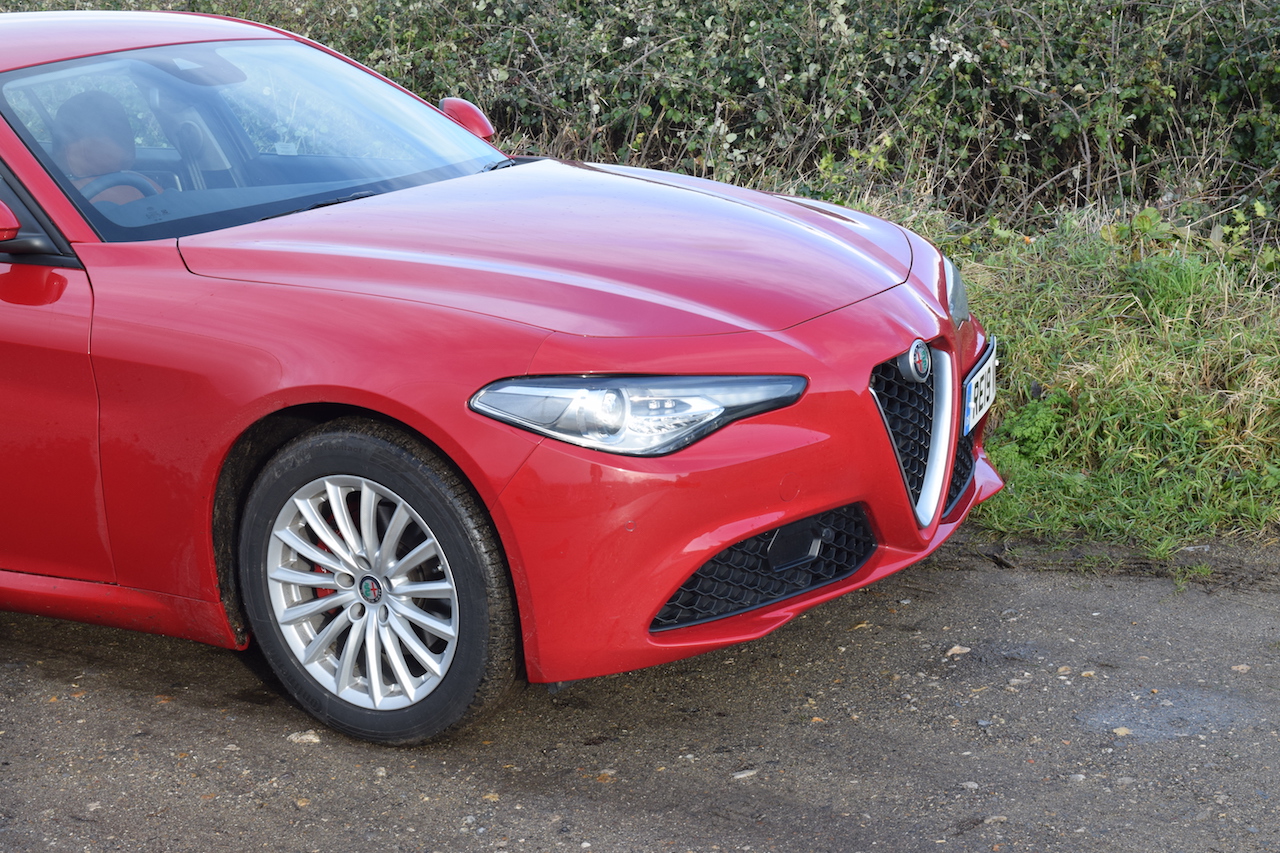
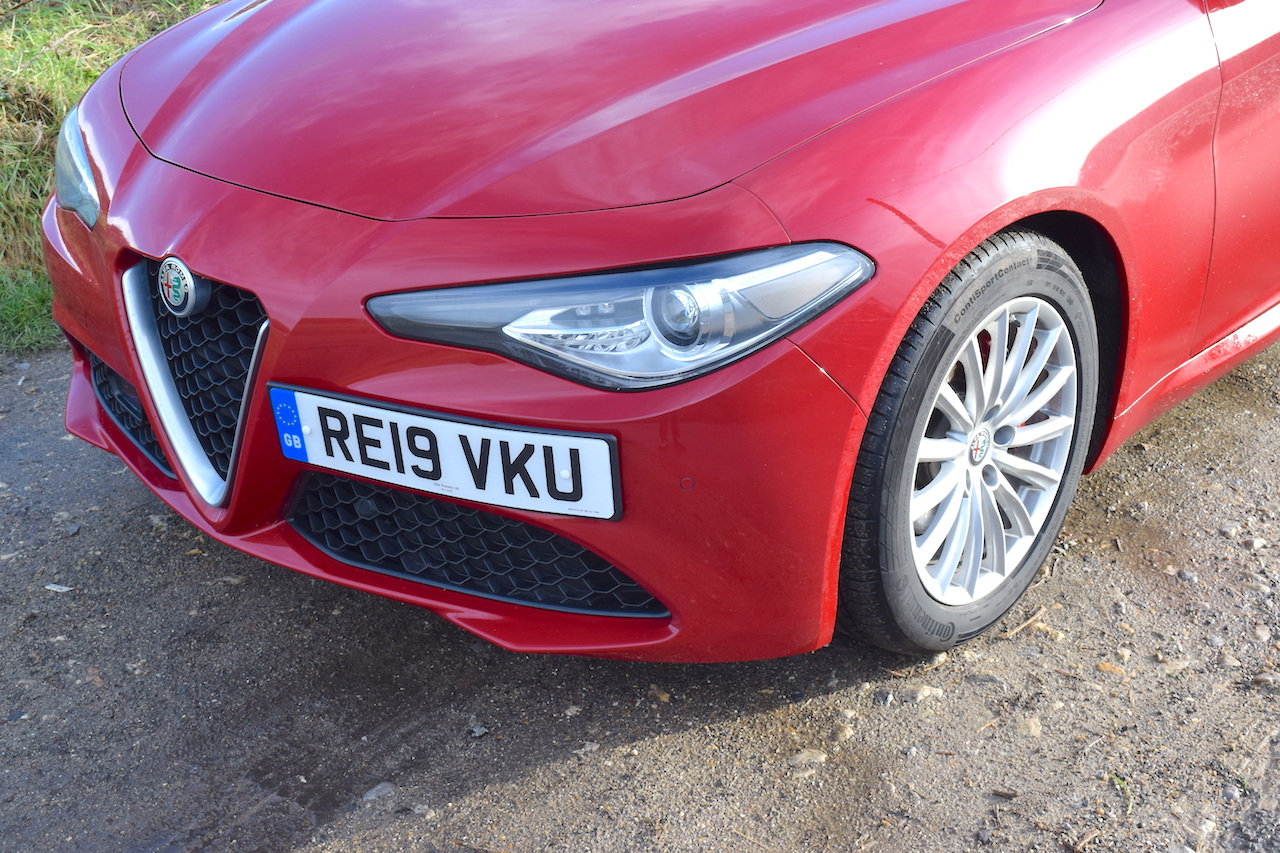
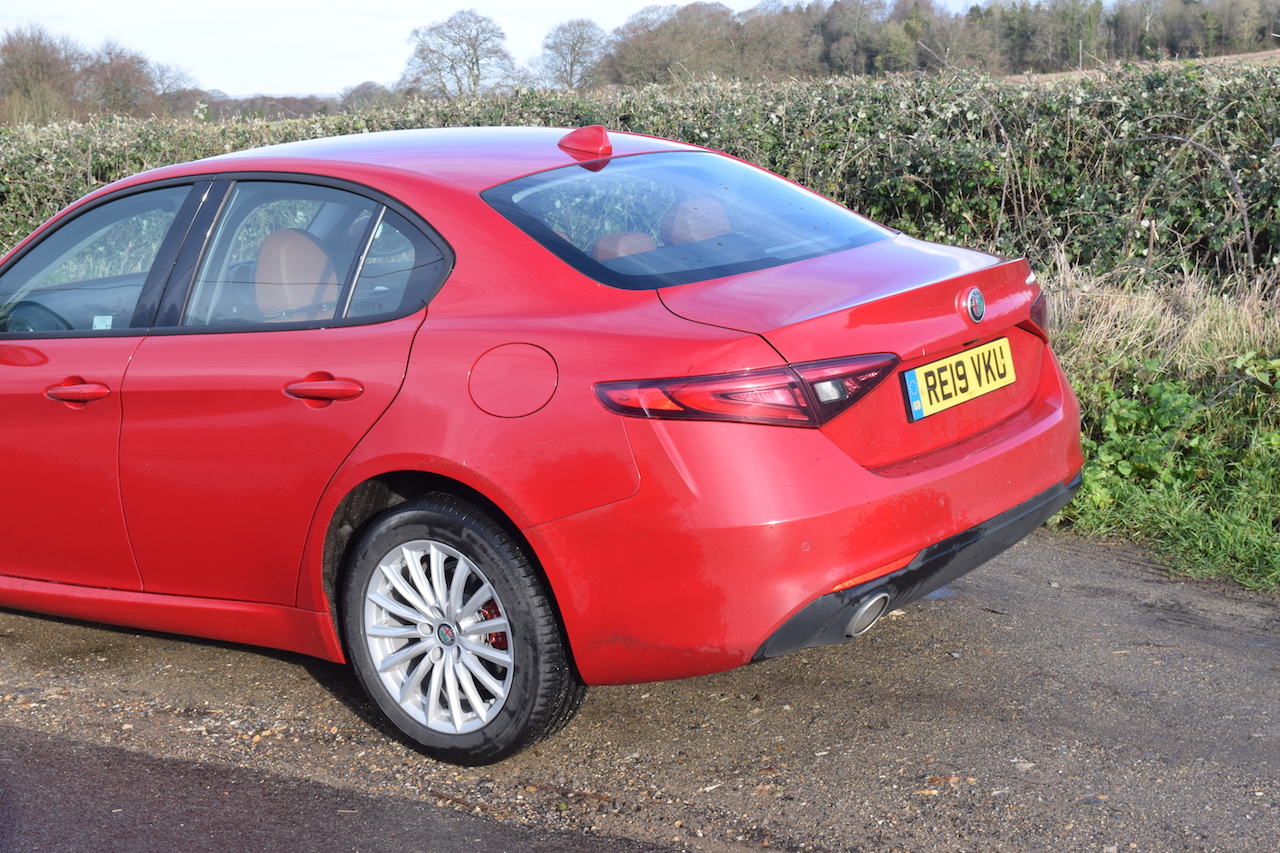
Under the skin
The front engine, rear wheel drive arrangement of the Giulia is set up to provide what is widely regarded as a ‘perfect’ 50:50 split of vehicle weight between the front and rear of the car. The exclusive use of aluminium for the engines, suspension systems, brakes, wings and doors helps save weight and improves the car’s dynamic performance, as well as helping to minimise emissions and fuel consumption. These aspects are also aided by careful bodywork design, resulting in an excellent drag coefficient of 0.25 Cx.
Buyers can choose between diesel power (all-aluminium, 2.2 litre engines, with a low speed/high torque turbocharger and developing either 160 or 190 bhp), or a 2.0 litre turbocharged petrol motor delivering 200 bhp (shown) – or 280 bhp in the case of the Giulia Veloce.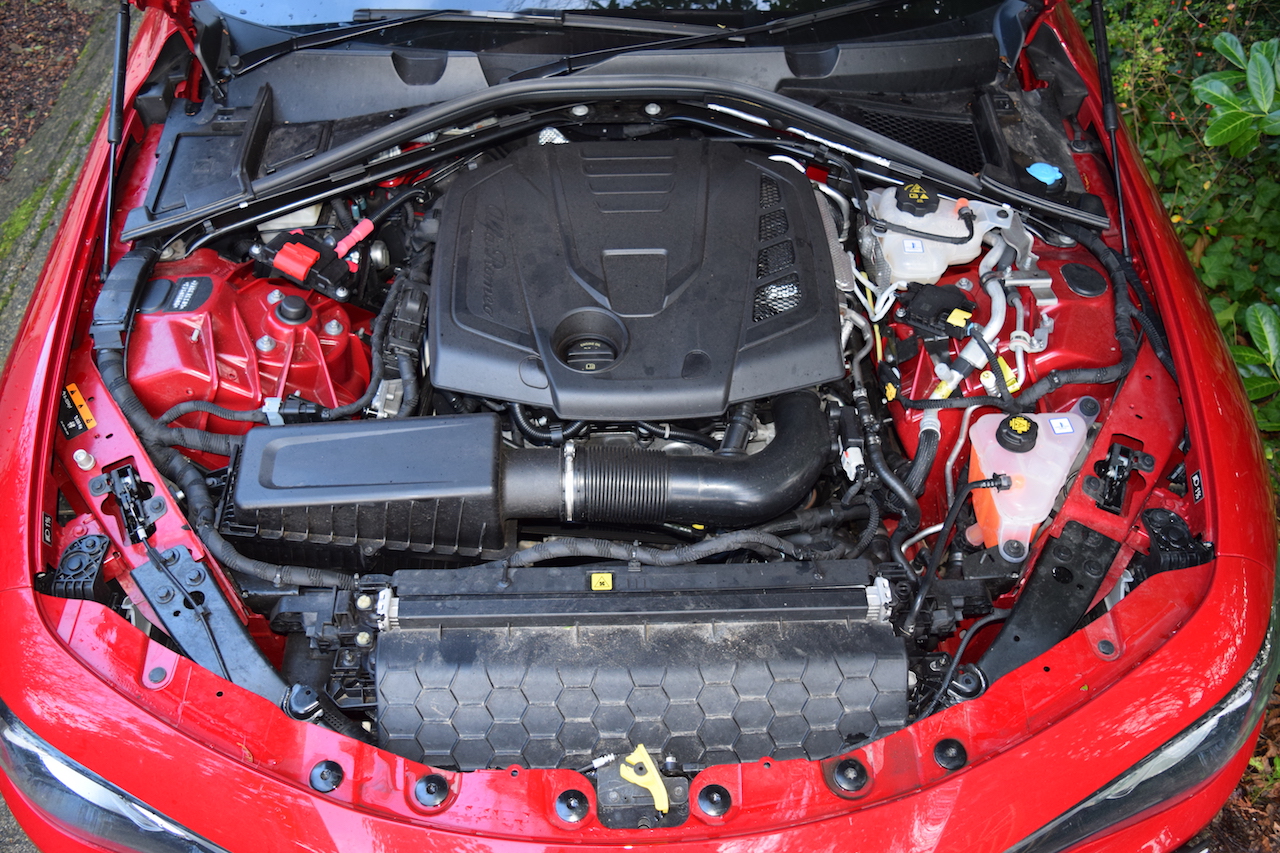 In all cases the engine is mounted longitudinally within the car, and the rear wheels are driven, via an eight speed automatic transmission.
In all cases the engine is mounted longitudinally within the car, and the rear wheels are driven, via an eight speed automatic transmission.
A vital part of the car’s inherent character is the Alfa™ ‘DNA’ drive mode set-up (incorporating ‘Dynamic’, ‘Natural’ and ‘Advanced Efficiency’ settings). This varies engine parameters and adapts responses from the accelerator, brake, steering wheel and engine according to the selected driving mode, in each case specifically and significantly changing the car’s behaviour.
‘Natural’ is the default mode, which is set automatically whenever the car is started; this provides a ‘comfort’ suspension setting for daily driving. With the rotary ‘DNA’ mode switch set to this position, the instrument panel illumination is blue.
By contrast the ‘Dynamic’ setting is indicated by red instrument panel lighting and delivers performance-orientated motoring, including sharper brake and steering–wheel response for more sporty on-road driving.
‘Advanced Efficiency’ (with green instrument panel illumination) is designed to optimise energy saving and dynamic efficiency.
The Giulia is also equipped with a patented AlfaLink™ suspension set-up, incorporating, at the front, a double wishbone system with a ‘semi-virtual’ steering axle and at the rear, ‘4-and-a-half links’ (Alfa’s description!).
Alfa Romeo says that the front double wishbone with semi-virtual steering axle has been developed to keep the front wheels perfectly perpendicular to the ground even in fast cornering situations, improving steering wheel torque linearity by 20% and reducing understeer. The rear ‘4-and-a-half links’ system is intended to provide best-in-class handling (lateral grip) while offering premium comfort levels.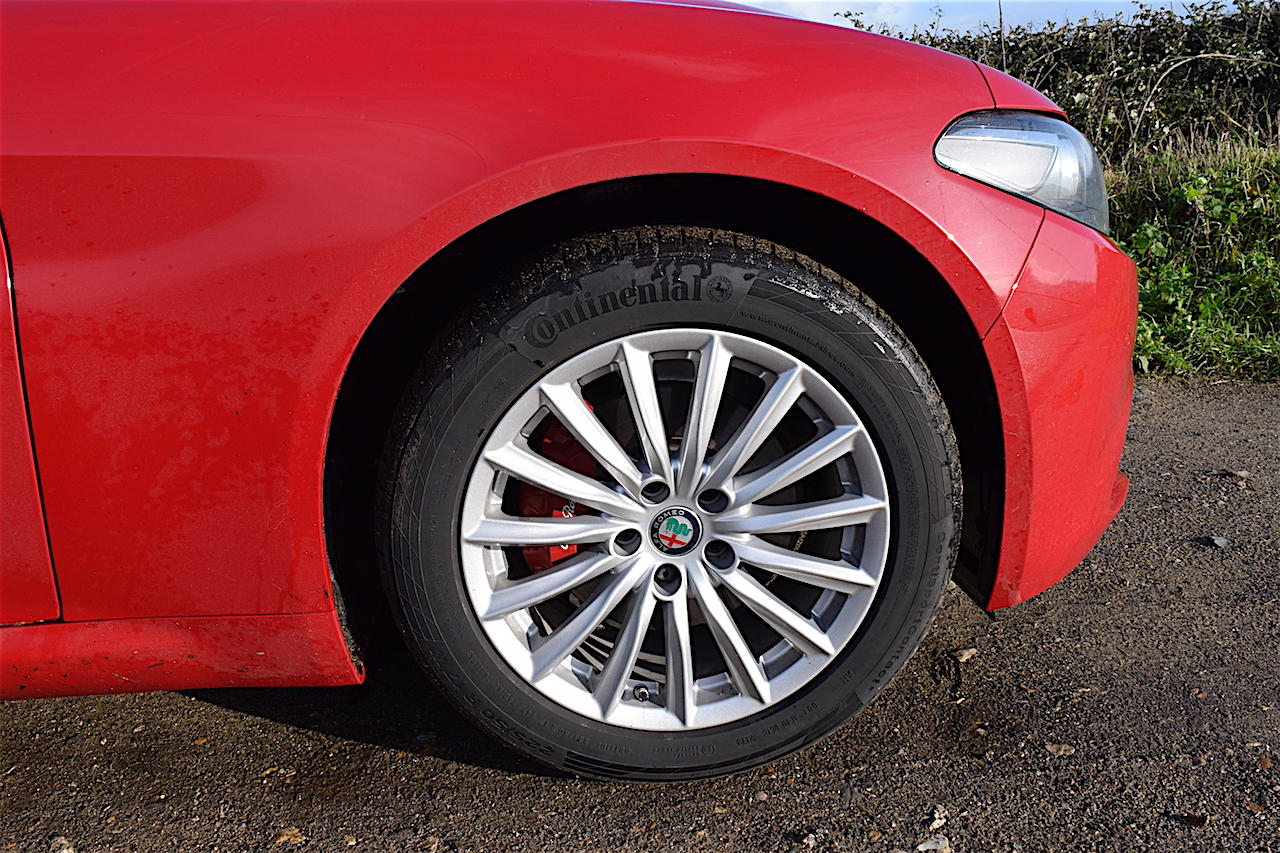
Specifications
All versions are well-equipped, featuring (for example) the Alfa Connect 8.8 inch three dimensional Nav screen, with DAB radio, Bluetooth and USB connectivity, and with the built-in infotainment system operated via voice controls, steering wheel or Rotary Pad. A wide variety of connectivity functions are incorporated within the set-up.
Standard-fit safety systems include Forward Collision Warning (FCW), Autonomous Emergency Braking (AEB) – including pedestrian detection, Lane Departure Warning (LDW) and Cruise control with a speed limiter function.
The Giulia also features an innovative electro-mechanical brake system that incorporates stability control and braking system components within a single set-up. The result is reduced weight, less brake pedal vibration, immediate feedback and highly effective braking (Alfa says from 62 mph to standstill in 38.5 metres or about 126 feet.
The first rung on the Giulia ladder is represented by the Super version (as tested here), priced from £32,620 (but with additional options fitted to our test car, and as listed in our ‘Tech. Spec.’ section, adding another £3,745, making a total of £36,365).
Specification levels rise through Nero Edizione, Speciale, Veloce and Veloce Ti levels. Mention should also be made of the bonkers-fast Giulia Quadrifoglio, powered by a 503 bhp twin turbocharged V6 engine and priced at £64,900…
Realities
Starting with the interior, the two tone brown and black Italian style upholstery on my Giulia test car looked smart and I felt it had a high quality feel. The seats proved to be supportive and comfortable too, with good headroom front and back, and with reasonable legroom for passengers in the rear seat, as well as for those in the front.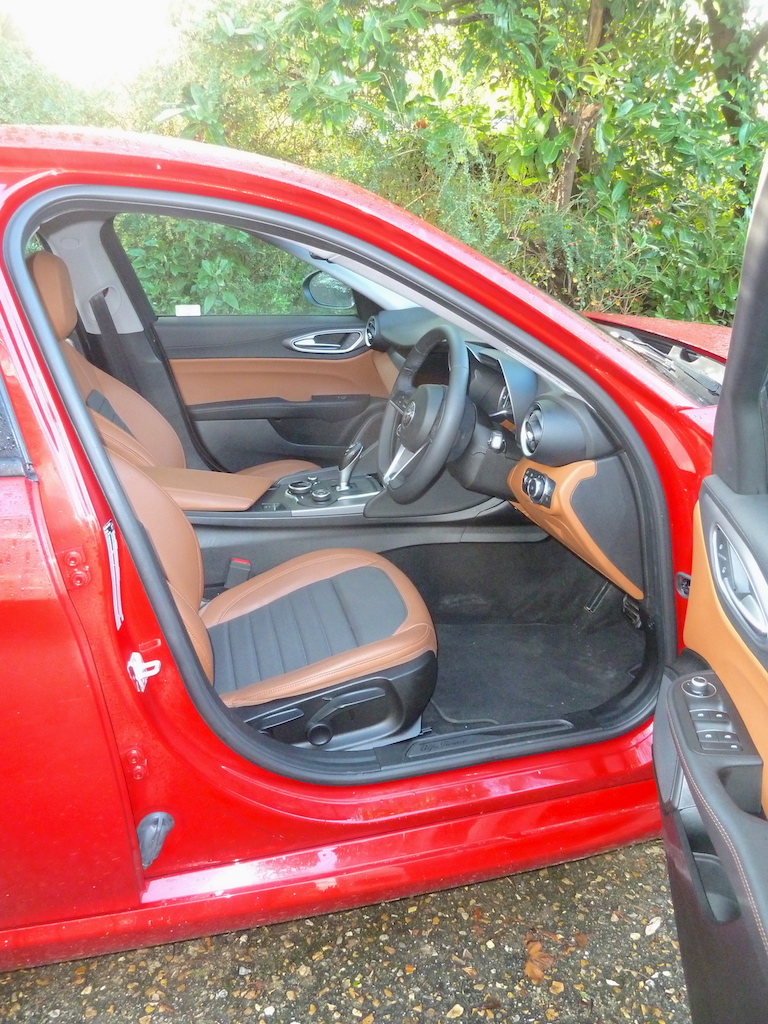
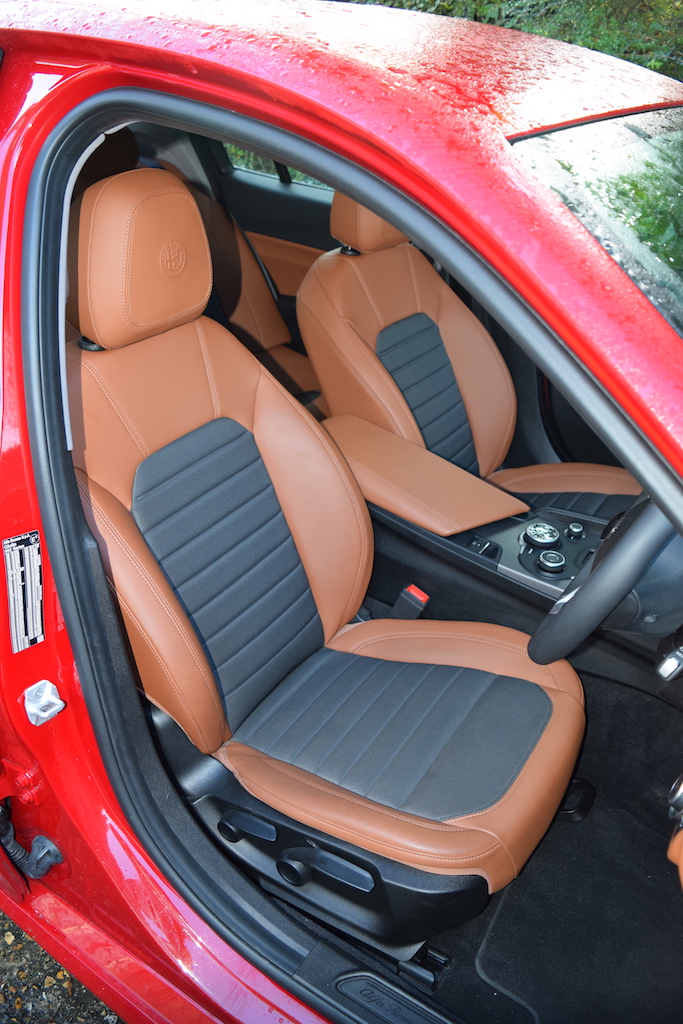
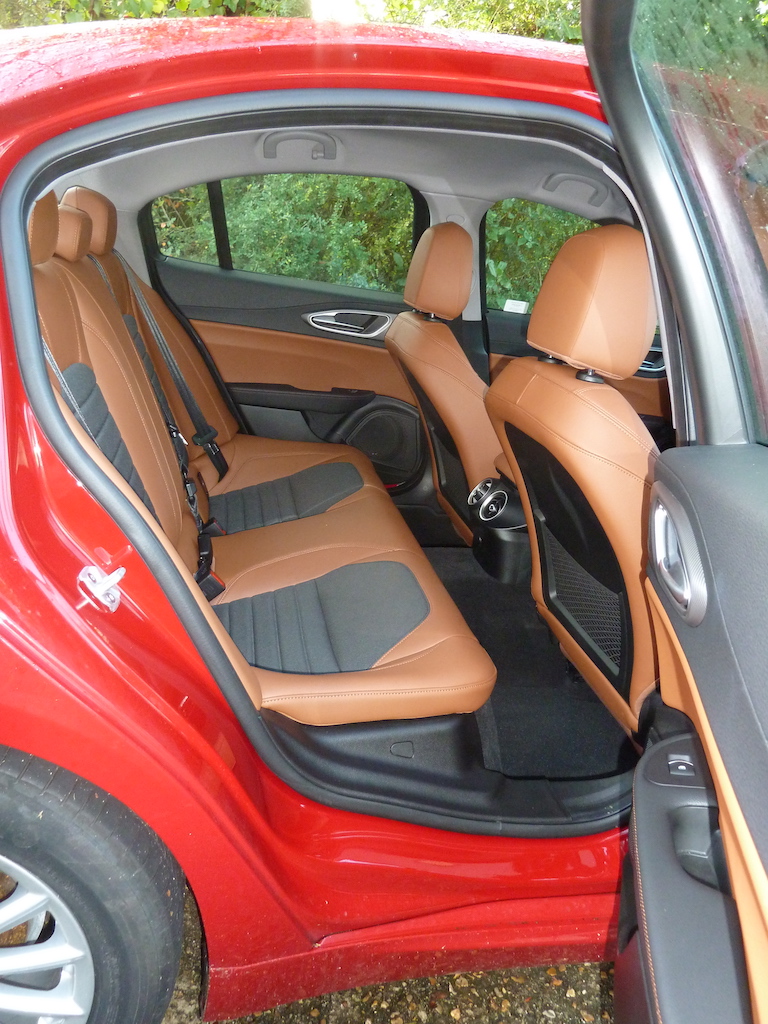
Stowage spaces around the interior included a generous glovebox, accommodating bins in each of the front doors (plus smaller ones in the rears), a very useful lidded box between the front seats, and elasticated ‘net’ pockets in the backs of the front seats.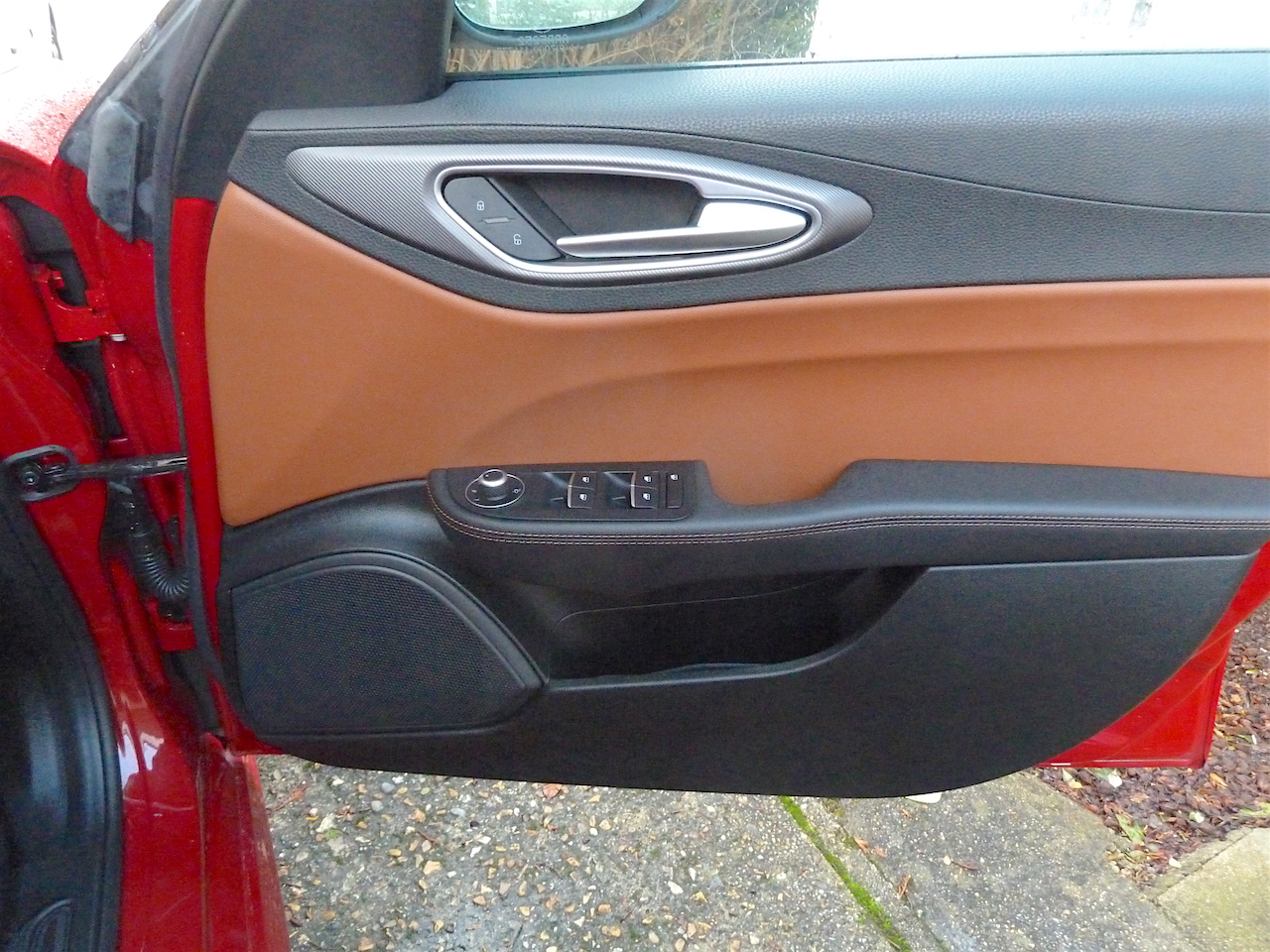
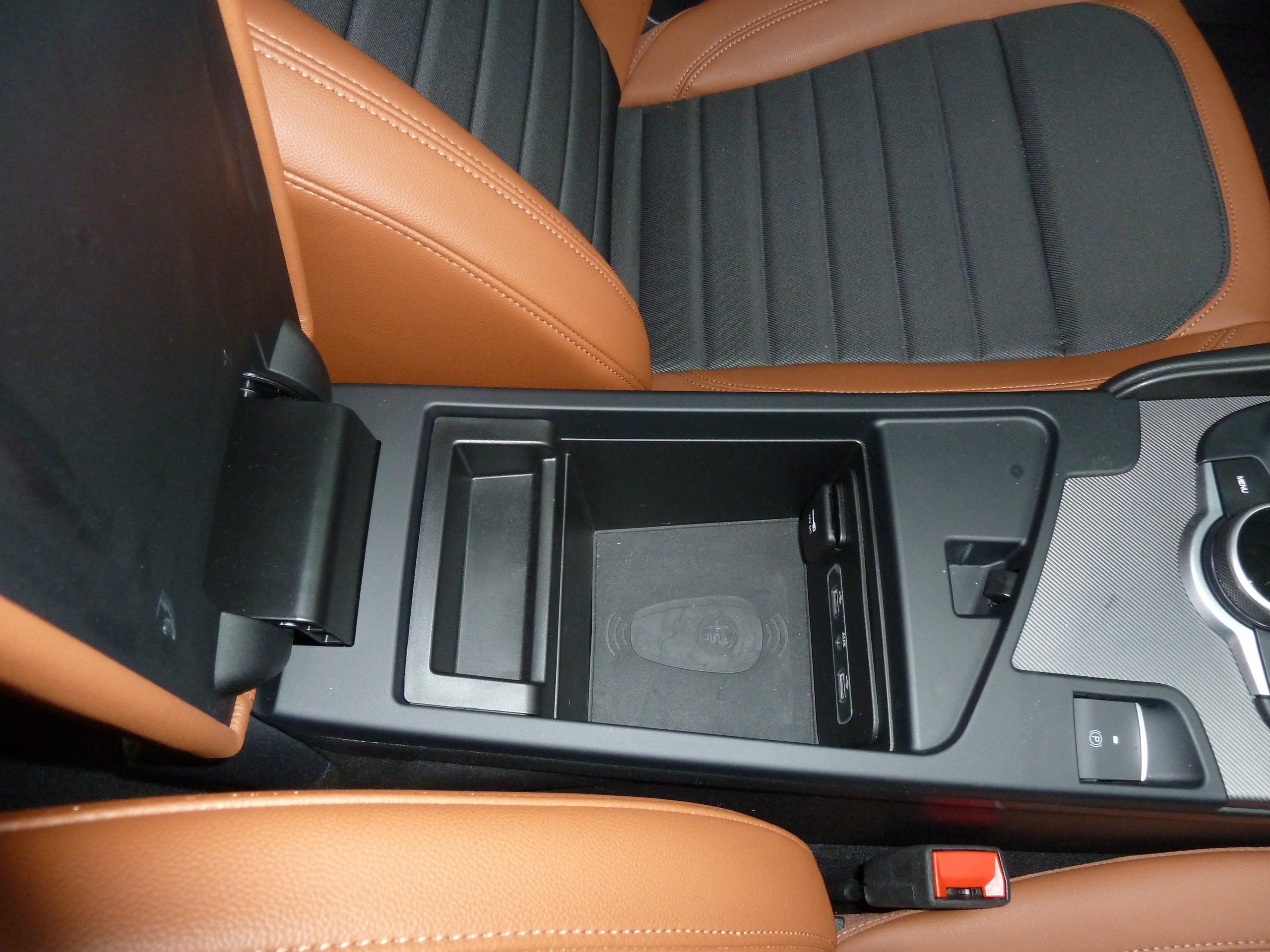
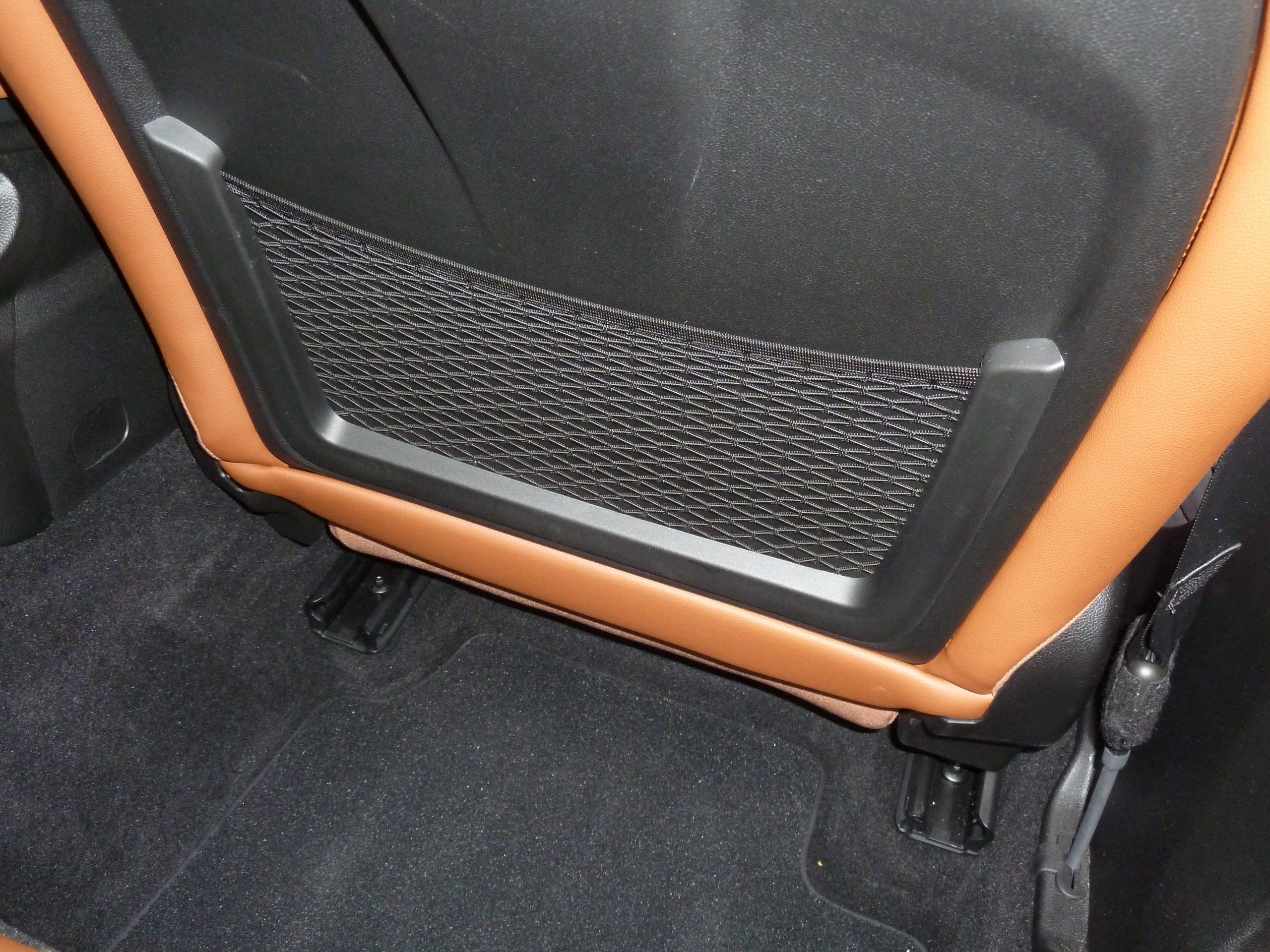 The wide-opening doors were welcome, and nice touches also included the ‘puddle lights’ built into the door bottoms, and the door handles which emitted a soft glow at night when the car was unlocked – a small but useful feature.
The wide-opening doors were welcome, and nice touches also included the ‘puddle lights’ built into the door bottoms, and the door handles which emitted a soft glow at night when the car was unlocked – a small but useful feature.
As the Giulia is sold only in saloon form (the Giulietta is a hatchback…), the boot is accessible only from the rear (and the seat backs don’t fold), but the compartment is long and wide, and reached from bumper level. It’s not very tall but I found that it can accommodate a decent amount of luggage. I also particularly liked the small compartment built into the left-hand side of the boot floor, perfect for cameras or small items of all sorts.
Alas there’s no spare wheel, but an emergency ‘inflation’ kit.
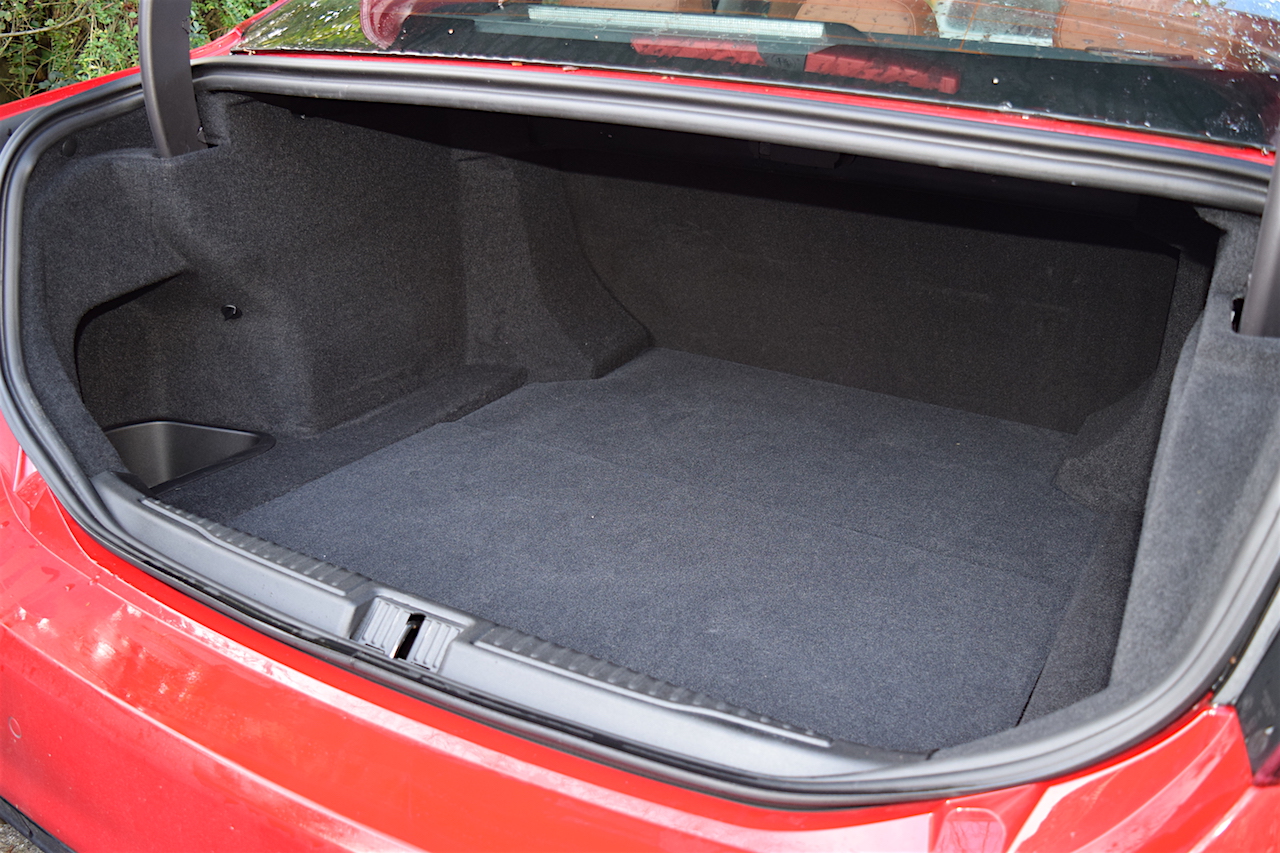 From a driver’s viewpoint, I welcomed the positioning of the instrumentation, including rev counter, speedometer, coolant temperature and fuel gauges (and with trip computer/mpg functions illuminating between the tachometer and the speedo). These were all mounted directly in front of the driver, and in his/her line of sight. However if I am honest, personally I didn’t find the markings on the temperature and fuel gauges to be very clear, and I was surprised that even the speedometer, highlighted in increments of 20 mph, was not as crisply marked as in other FCA cars I have driven. Not a major problem, just an observation.
From a driver’s viewpoint, I welcomed the positioning of the instrumentation, including rev counter, speedometer, coolant temperature and fuel gauges (and with trip computer/mpg functions illuminating between the tachometer and the speedo). These were all mounted directly in front of the driver, and in his/her line of sight. However if I am honest, personally I didn’t find the markings on the temperature and fuel gauges to be very clear, and I was surprised that even the speedometer, highlighted in increments of 20 mph, was not as crisply marked as in other FCA cars I have driven. Not a major problem, just an observation.
The engine start/stop button is built into the steering wheel, and with the two litre petrol engine running it emits a pleasant, subdued burble.
As with so many sporting Alfas through the decades (and I have been sampling them for more than 40 years!), I found the Giulia’s 200 bhp 2.0 litre engine to be a delightful motor, willing and able to pull strongly and effortlessly from low rpm levels, when required, and equally delivering plenty of power when needed for overtaking or hill-climbing. It’s quiet-running and refined in operation too, and when cruising at 60 mph on the open road, the tacho needle on our test car was indicating just 1,600 rpm. In fact the maximum torque output of 330 Nm or 243 lb.ft is delivered at 1,750 rpm, but there’s plenty of strong pulling power available either side of this rev level.
It helps that the sweet-changing eight speed automatic gearbox is perfectly matched to the torquey engine, and the wide spread of ratios means that the car always seems to be in the correct gear for the prevailing driving conditions and driver input. For most of my time with the car, I was happy to leave the gearbox to its own ‘self-changing’ mode; quite simply it worked so very well. However, on a few occasions I did try ‘manual operation’ (engaged simply by moving the gearchange control lever to the left of its normal position, and swapping ratios by moving the lever towards the ‘+’ and ‘–‘ positions). To be truthful, although this was fun (for example, helping to hold onto a given gear to higher than usual speeds when accelerating, compared with the transmission doing its own automatic thing), I found that driving this car was just as exhilarating when letting its own transmission change the ratios. Of course, the ‘manual’ mode does also enable the car to be held in a low gear when descending steep hills, etc.
I was very impressed too by the car’s positive handling and roadholding characteristics; just so well-balanced in any situation and at all legal speeds.
In my native Dorset there are a number of ‘favourite’ test roads of mine, all of which include long straight sections, both steep and gentle gradients, mild curves and tight corners, and the Alfa proved to be a first class dynamic performer on all of them during my week-long test. In fact on more than one occasion I headed for these roads just to enjoy the driving experience.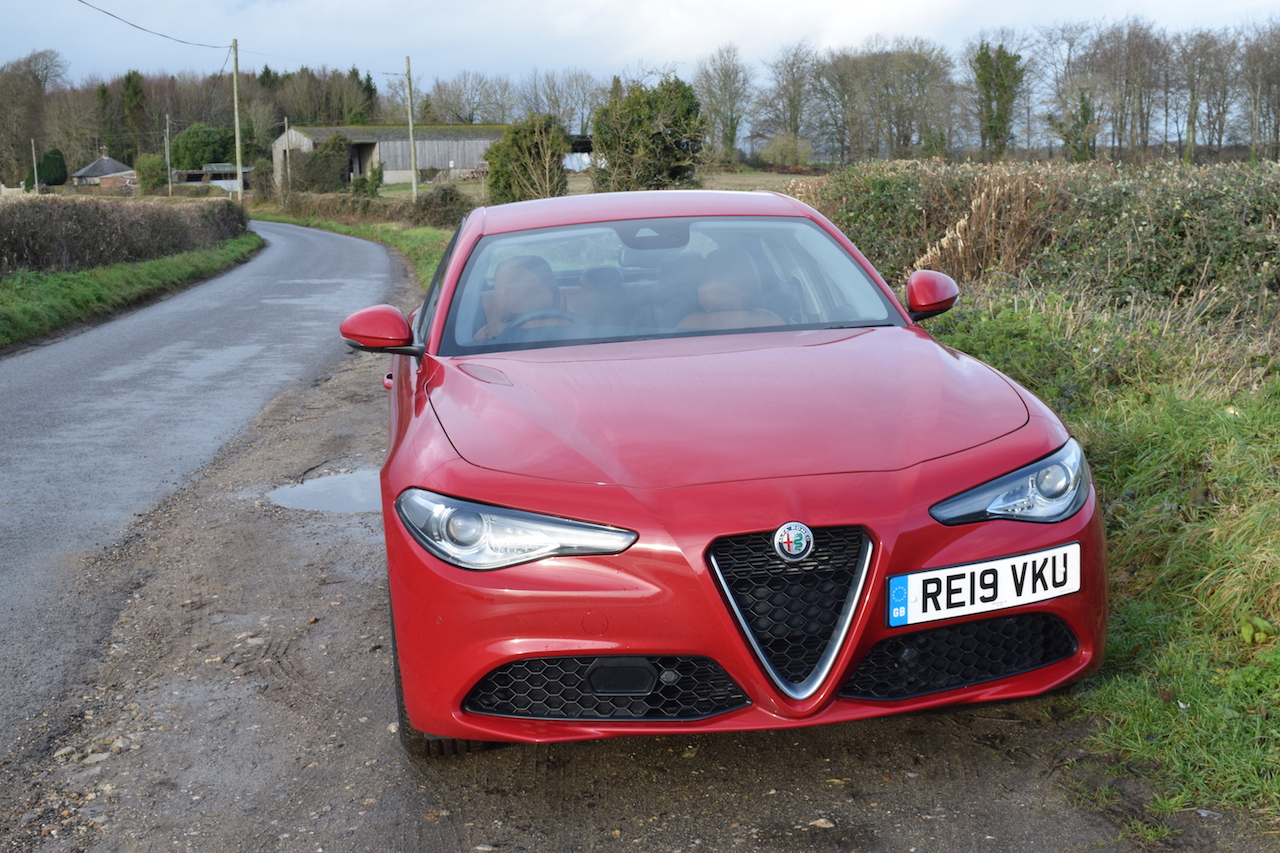 Traction was good, the car cornered on its proverbial ‘rails’ and the ride quality was excellent, with the suspension soaking up with ease both small and large road surface undulations.
Traction was good, the car cornered on its proverbial ‘rails’ and the ride quality was excellent, with the suspension soaking up with ease both small and large road surface undulations.
As mentioned earlier, when the car is started, the ‘DNA’ control defaults to the ‘N’ (‘Natural’) position. In this mode the car was comfortable and eager to perform. However, by switching the control to the ‘D’ (‘Dynamic’) position, even more of the car’s sporting character shone through, with noticeably sharpened dynamic responses and even more rapid progress than usual.
Having said that, for many miles of ‘normal’ motoring I rotated the control to the ‘A’ (‘Advanced Efficiency’) position, to optimise emissions and fuel consumption, and in this mode the car was still a very willing performer, providing good acceleration and comfortable cruising, but with improved mpg resulting.
The car is a substantial vehicle, siz-wise, but I found it easy to drive in town, and to park, with the reversing camera helping to make life easy when parking in tight spaces.
Fuel Consumption?
The WLTP official ‘Combined’ fuel consumption figure for our test Giulia is 36.2 mpg. During my week-long test drive, including a mixture of driving conditions, including town, country and long-distance motoring, my overall figure, as recorded by the car’s on-board computer, was precisely 32.0 mpg.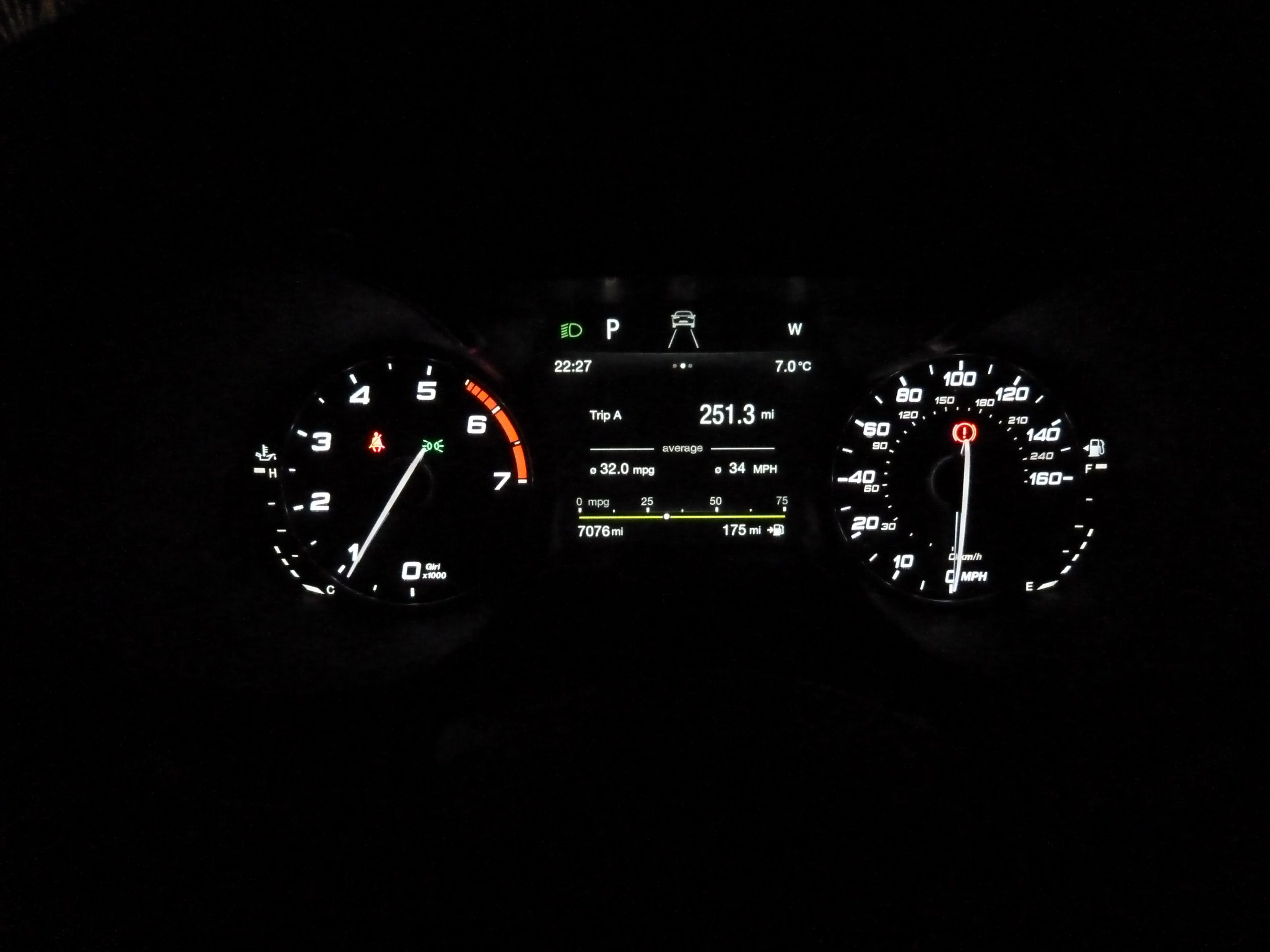 In-town running saw figures of just under 30 mpg, improving to the mid-thirties per gallon on the open road.
In-town running saw figures of just under 30 mpg, improving to the mid-thirties per gallon on the open road.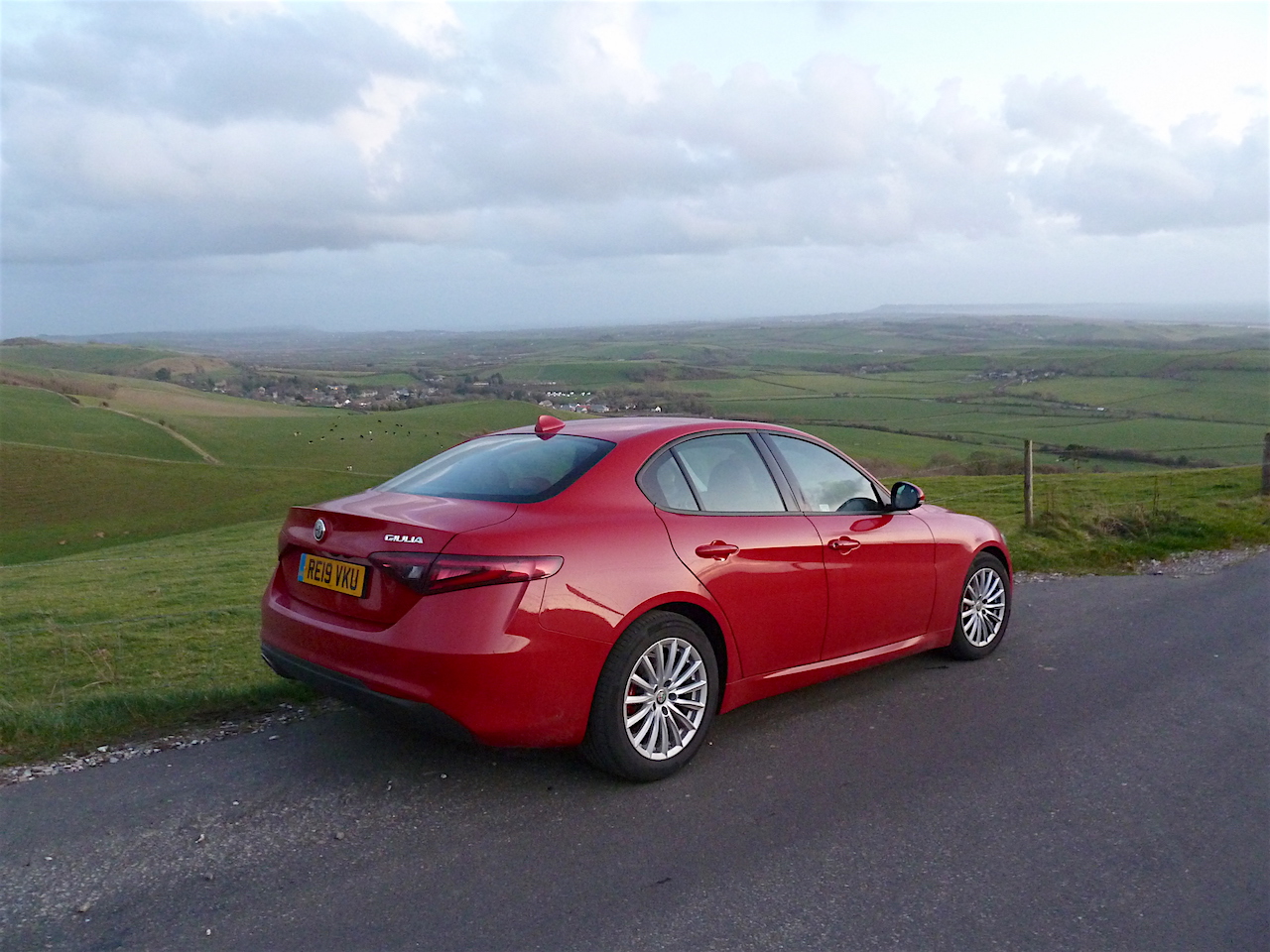
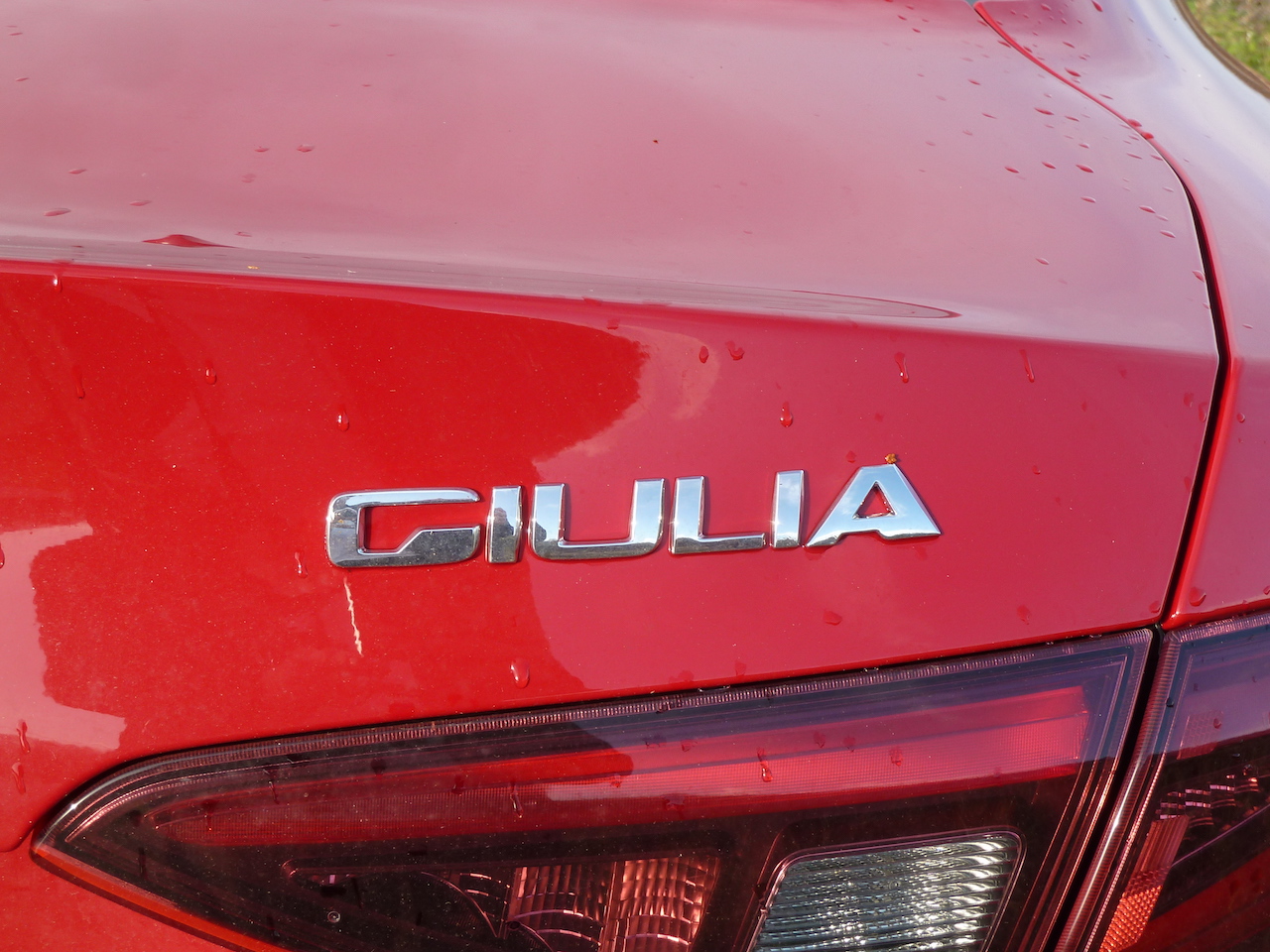
VERDICT
Alfa Romeos have always been cars built for driving pleasure, and this Giulia is no exception. However, during my time with the car it was also enjoyed by my passengers, it felt well-built and it proved to be practical for everyday family use.
Its top-rate dynamic capabilities have to be experienced to be fully appreciated, and with its first-class happy combination of a cleverly-developed ‘chassis’, excellent high-performing 2.0 litre engine and smooth-operating automatic gearbox, I rate it very highly.
I also appreciated the car’s under-stated good looks; to me it looks like an Alfa should.
If you are looking for an individualistic saloon that is great to drive, as a competent and enjoyable alternative to competitors in its class, it should definitely be on your shortlist.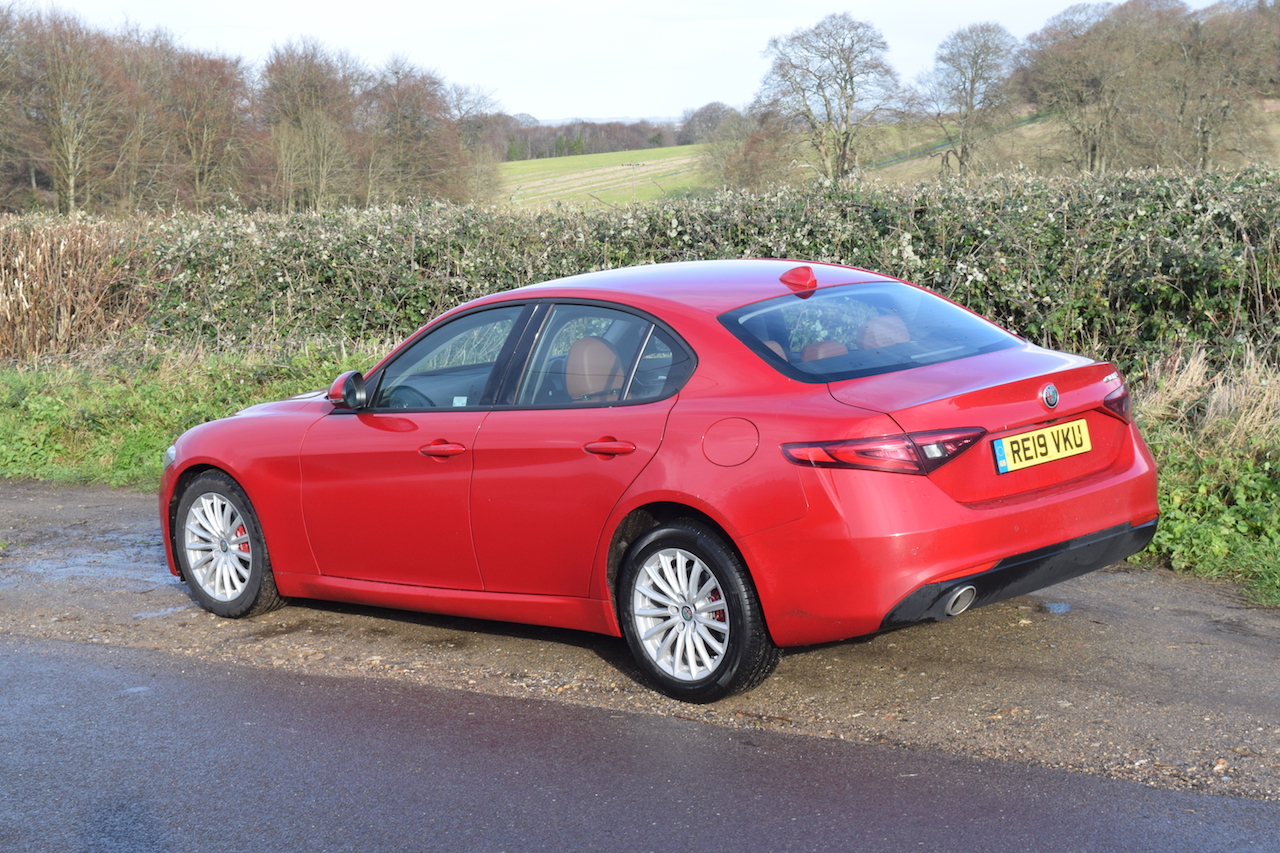
NEW GIULIA – COMING VERY SOON
While, as I write (December 2019) the car I test drove is still a current model, Alfa Romeo has just announced that for the 2020 model year the Giulia (and the Stelvio) are being further upgraded in many ways. The changes will notably include: New infotainment and connected services systems, ADAS and level 2 autonomous driving systems, fresh interiors with updated materials, and a new range structure.
Alfa Romeo says that their new cars will be available in their showrooms from the beginning of 2020.
WHEELS-ALIVE TECH. SPEC IN BRIEF:
Alfa Romeo Giulia 2.0 Super.
Engine: 2.0 litre four cylinder, in-line turbocharged petrol.
Transmission: Eight speed automatic gearbox; rear wheel drive.
Power: 200 hp @ 4,500 rpm.
Max. Torque: 330 Nm (243 lb.ft) at 1,750 rpm.
Performance:
0-62 mph: 6.6 seconds.
Top speed: 146 mph.
Fuel consumption:
Official WLTP figure: Combined, 36.2 mpg.
Achieved during our Wheels-Alive test, over 251 miles, average 32.0 mpg.
Estimated mileage range on a full tank (58 litres or 12.76 Imperial gallons), at our actual achieved mpg: Approximately 405+ miles.
CO2 Emissions: 153 g/km (Benefit-in-Kind tax rate 34%).
Warranty: Five years/75,000 miles, plus three years servicing and five years roadside assistance.
Insurance Group: 24-34, depending on version.
Euro NCAP rating: 5*.
Dimensions:
Length 4,643 mm (15.23 ft), Width 1,850 mm (6.07 ft), Height 1,436 mm (4.71 ft).
Luggage capacity: 480 litres (16.95 cu.ft).
Four doors, five seats.
Price (‘On the Road’):
Super, £32,620, plus options fitted to test car:
17 inch 15-spoke sports wheels £395
Sports Pack £975
Driver Assistance Pack Plus £950
Convenience Pack £450
Climate Pack £250
Red brake calipers £450
Electrically folding door mirrors £275
Total price of extra cost options: £3,745
Total price of car as tested: £36,365
